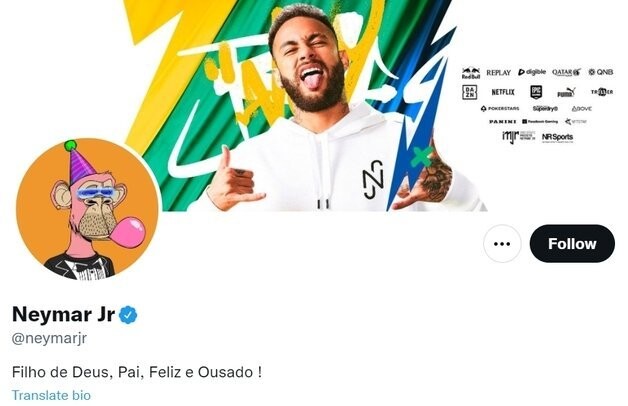Computer graphics enter the realm of pure art with NFT art
본문
As the number of non-face-to-face activities online due to the pandemic has increased, the digital world such as Metaverse has come close to our daily lives. In the art world, as exhibition halls were closed and online viewing rooms attracted attention, more and more people naturally appreciate works in digital files. And at Christie's online auction on March 11, 2021, NFT art immediately became a hot topic as "Everydays: The First 5000 Days" was sold for about 76.5 billion won, with a collage of all the works painted by an artist named Biffle for 5,000 days every day since 2007. What is NFT and what is NFT Art?
Non-Fungible Token (NFT) based on blockchain technology is translated as 'non-replaceable token'. All digital targets can be reproduced exactly the same as the original through file copying. NFT is an NFT label that proves that it is the original to a digital object that can be reproduced indefinitely, so that the value of the original that cannot be replaced no matter how many duplicate files are circulated in the future is recognized. As virtual spaces such as metaverse became popular, digital asset transactions were activated together, and it was NFT that solved the need to prove the originality of these assets. NFT is mainly traded as blockchain-based cryptocurrency. NFT Art refers to an object that is traded like an art piece by attaching NFT to a digitized image.
As Christie's auction triggered a catalyst, Seoul Auction, the nation's largest art auction house, and Dunamu, the holding company of Upbit, the nation's largest coin exchange, began trading NFT art in cooperation with their respective affiliates. The blockchain-based cryptocurrency industry can prove the actual value of coins when NFT transactions are activated, and the art world can expand the appearance and size of the stagnant market by digitizing art transactions that have been limited to real transactions.
As the interests of the two industries match, NFT Art quickly attracted attention as a hot potato in the art market. Art's share of NFT's total trading volume soared from 24% in 2020 to 43% in the first quarter of 2021 thanks to Biffle's high bid and interest. Since then, it has continued to decline, accounting for only 8% in the first quarter of 2022.
Various NFTs are created and traded, such as trading land on the metaverse and the release of the NFT of the Hunminjeongeum Haerye version, but PFP NFT is actually the only NFT that has practical value. PFP stands for "ProFile Picture" and refers to a character-oriented character illustration that can be used as a profile picture on social networking services (SNS) such as Kakao Talk.
CryptoPunk, which was released only 10,000 in 2017, was the main player in revitalizing the NFT market, with Hana winning 14 billion won at Sotheby's in June 2021 and about 28 billion won in February 2022. And Bored Ape Yacht Club (BAYC), which was issued 10,000 in April 2021, developed the material use and value of NFT, a dematerialized digital asset, by holding a social gathering where only owners can enter and providing additional NFTs for free along with copyrights.
In fact, BAYC is used by entertainment and sports superstars such as Eminum, Paris Hilton, Madonna and Neymar, and characters such as Elon Musk as SNS profile photos. BAYC buyers buy social club memberships that interact with them. Adidas recently bought a BAYC monkey and created a new character with an Adidas jersey on it, and sold 30,000 units for about 900,000 won each as an NFT, earning 27 billion won.
Following this move, 10,000 PFP NFTs called "Metacongs" based on gorillas have been released in Korea. The development of NFT through collaboration with celebrities in the entertainment and sports industries is drawing attention, with the creation of "Sunmiya Club," which makes the image of Sunmi, a famous singer, into a profile picture.
With the rise of PFP NFT, computer graphics (CG) as a work of drawing profile pictures are being re-examined. Computer graphics is a computer technology that makes images by inputting and converting the shape and color of an object with a computer. What was used only for design and architectural design is now used in various fields such as film, game, advertising industry, computer art, and industrial design. Biffle's daily paintings for 5,000 days, CryptoPunk and BAYC's monkey paintings are all computer graphics. As shown in David Hockney's paintings on the iPad, the color of light from the computer's light source or cartoon-like images seen in games are now common in pure art. Computer graphics were already influencing pure art, and now they have entered the realm of pure art.
Some might argue that drawing 10,000 images of BAYC monkeys and crypto-punks is also art. However, most pure art artists, such as monochromatic paintings and Kusuma Yayoi, who are familiar to us, actually do not differ much from each work. In the art market, the mark that reveals the work of a specific artist is increasingly being emphasized rather than the difference between works.
The NFT art craze rapidly cooled the initial overheating as legal problems such as copyright infringement and plagiarism sales, including the problem of registering only unique identifiers, not actual contents, in the blockchain ledger. In the first place, however, NFT targets the digital domain, where NFT art starts in computer graphics that have grown. NFT Art has at least shown that computer graphics have entered the realm of pure art. In addition, the NFT simplifies the fact that the main desire for art consumption today is the desire to show off, and reveals it to the fore in a way called "10,000 Variations of One Image."

